 |
 |
 |
 |
 |
 |
 |
 |
 |
 |
Scientific files |
 |
 |
| |

 |
Infrasound observation of the Etna eruption |
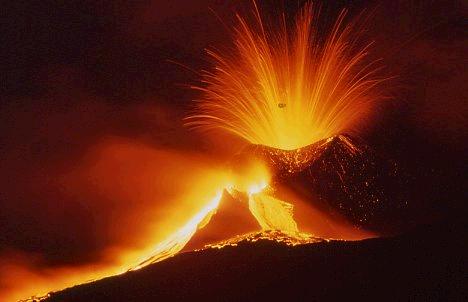
 |
photo : André Laurenti |
 Contents Contents
 Mount Etna Mount Etna
Mount Etna is the largest volcano in Europe in terms of area covered (1250 km2) and height (3350 meters above sea level). Due to its continuous eruptive activity, it can also be considered as one of the most active volcanoes of the last few years.
At the beginning of April 2001, the ban, enforced after the April 26, 2000 eruption and forbidding access to areas above 2700 m, was lifted by the Catania Prefecture. A short while later, Etna entered a new eruptive phase...
 DASE observations DASE observations
The infrasound station of Flers (Orne, France), located 1800 kilometers from Etna, detected numerous signals coming from the volcano. The signals, with a frequency nearing 1 Hz, were detected occasionally from May 26 until the last eruptive phases on July 24-26. During this last period, explosions producing strong detonations together with continuous degassing, violently spewed boulders and plumes at heights of over 600 meters. The explosions lasted over 48 hours at intervals of 10 to 15 seconds.
The IS26 (Freyung, Germany) and DIA (Deelen Infrasound Array in the Netherlands) stations also detected signals with the same characteristics (propagation speed and frequency).
The crossing of Flers and IS26 azimuths resulted in an initial location that was 1° or 2° away from the exact location. The azimuths measured in Flers and Germany are approximately 5° higher than the theoretical azimuth. These deviations should be corrected by taking into account the winds along the propagation path.
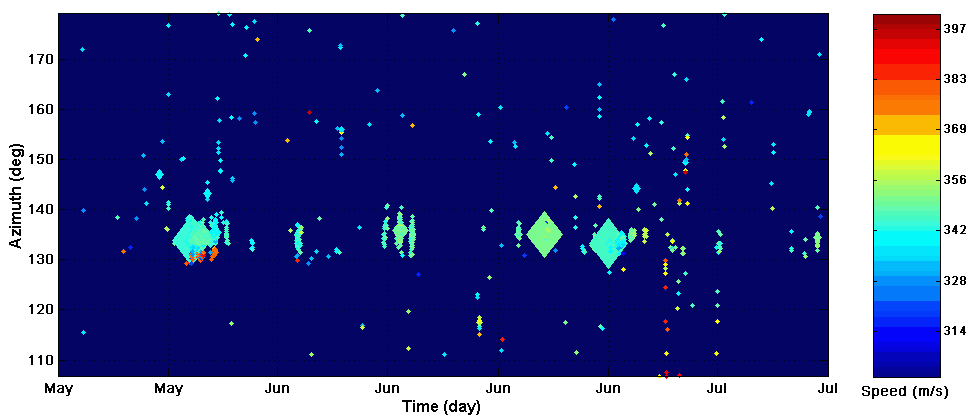
 |
Result of automatic infrasound processing performed at Flers station between May 26 and July 17, 2001.
The value of the horizontal speed is represented by the color.
A detection peak is observed between 130° and 137°. The Flers/Etna theoretical azimuth is 131°. |
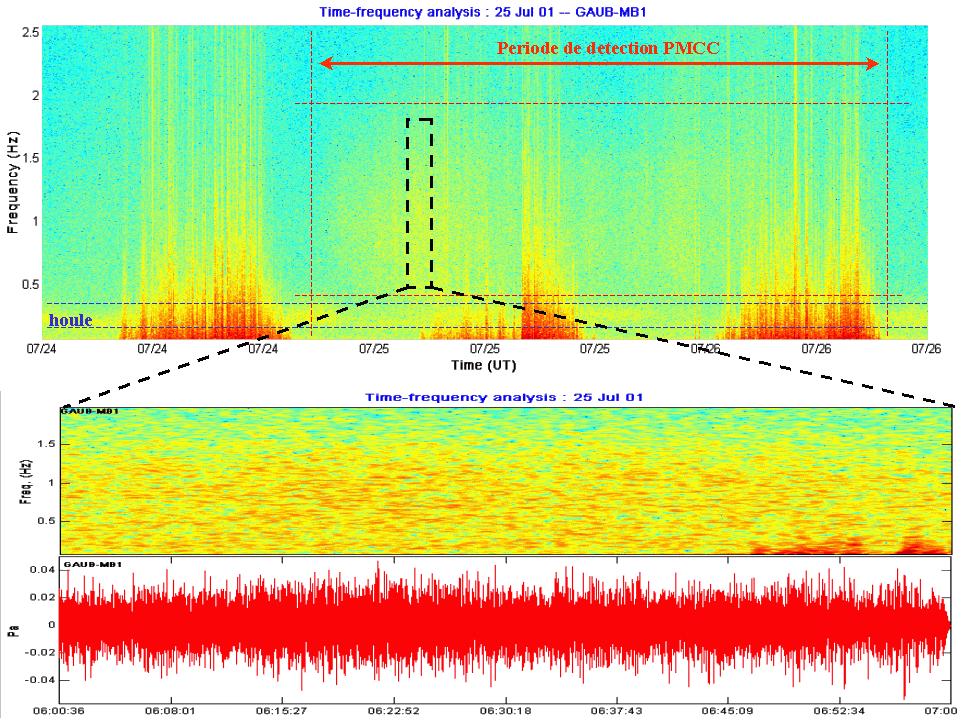
 |
Time-frequency analysis over 3 days of data. The detection period extends from July 24 at 10 pm
to July 26 at 5 am (UT). Signal energy is mainly in the [0.5-2] Hz band. |
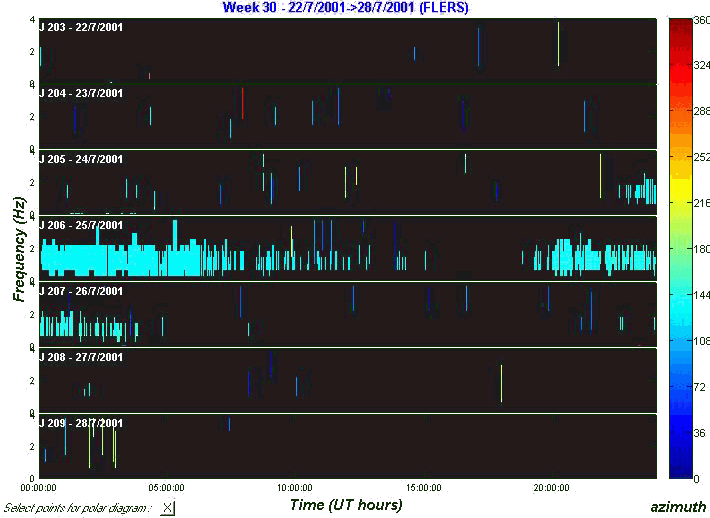
 |
Results of automatic infrasound processing performed in the 0.1-4 Hz band.
No signal detected between 10 am and 6 pm (UT) on July 25, due to the higher acoustic background noise in Flers. |
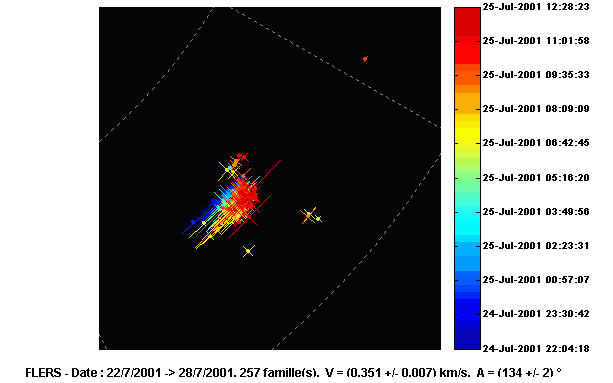
 |
Polar diagram representing detection: speed/azimuth/time |
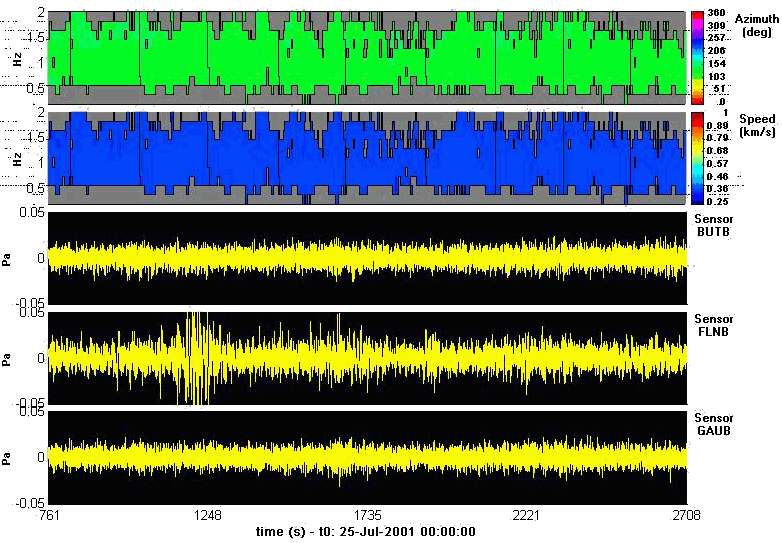
 |
Use of the interactive PMCC method over a time window in a time/frequency representation.
This process confirms the isochronous nature of the source. |
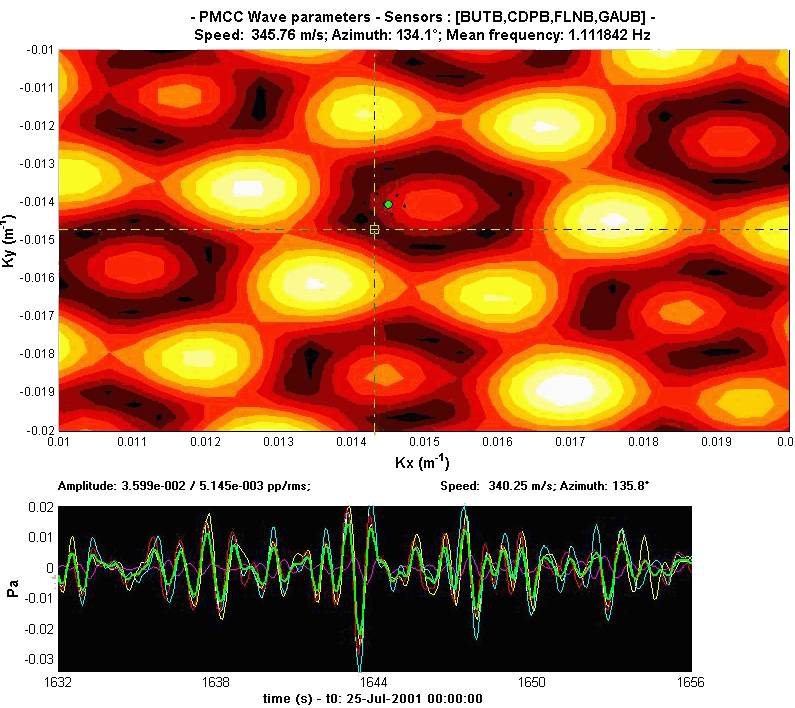
 |
Interactive signal rephasing. |
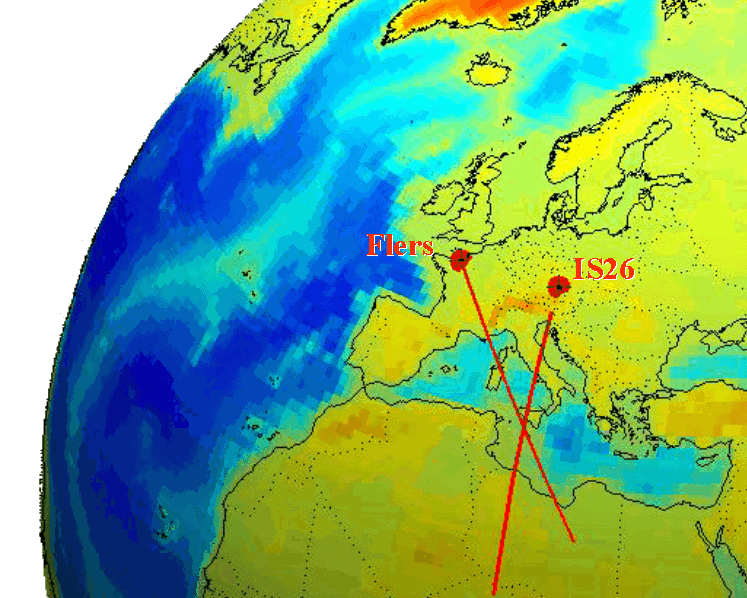
 |
Location by Flers and IS26 station azimuth cross-correlation. |
|
|
|